How to get more out of your Korg Drumlogue
We give you a deeper insight into this latest, percussive addition to Korg's much-loved range
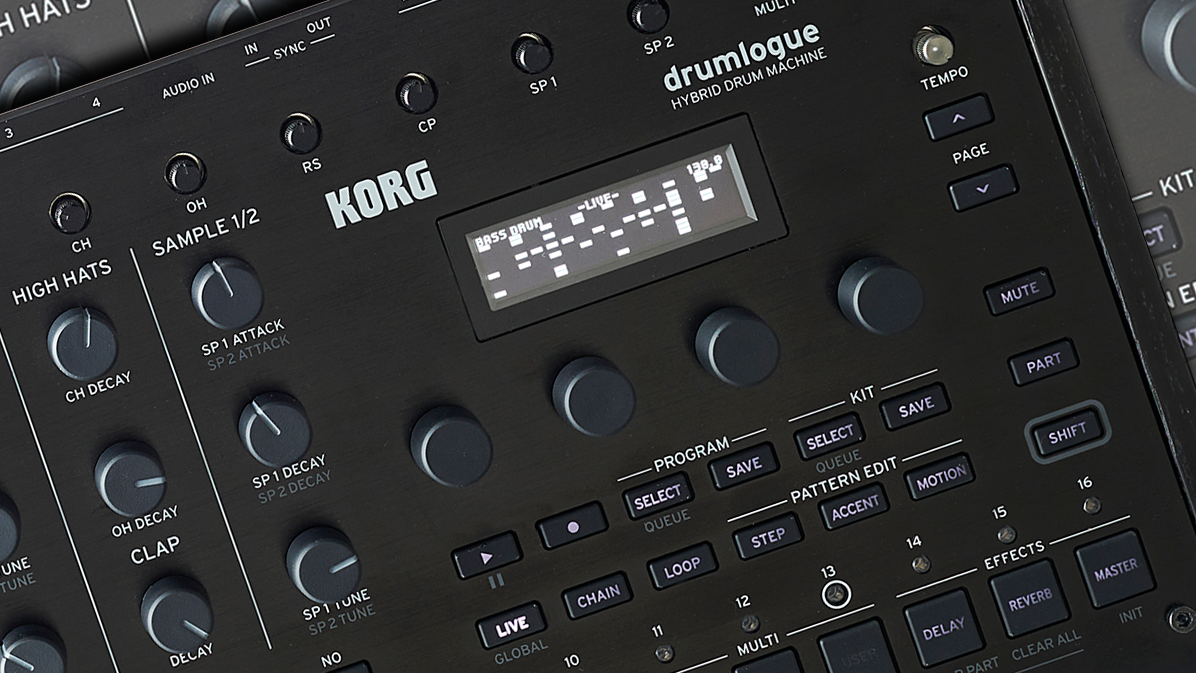
Korg’s history of drum machines over the years is an interesting one. While they’ve largely leaned more in favour of synths, their Volca line saw the reintroduction of a mostly analogue portable drum machine in the Volca Beats.
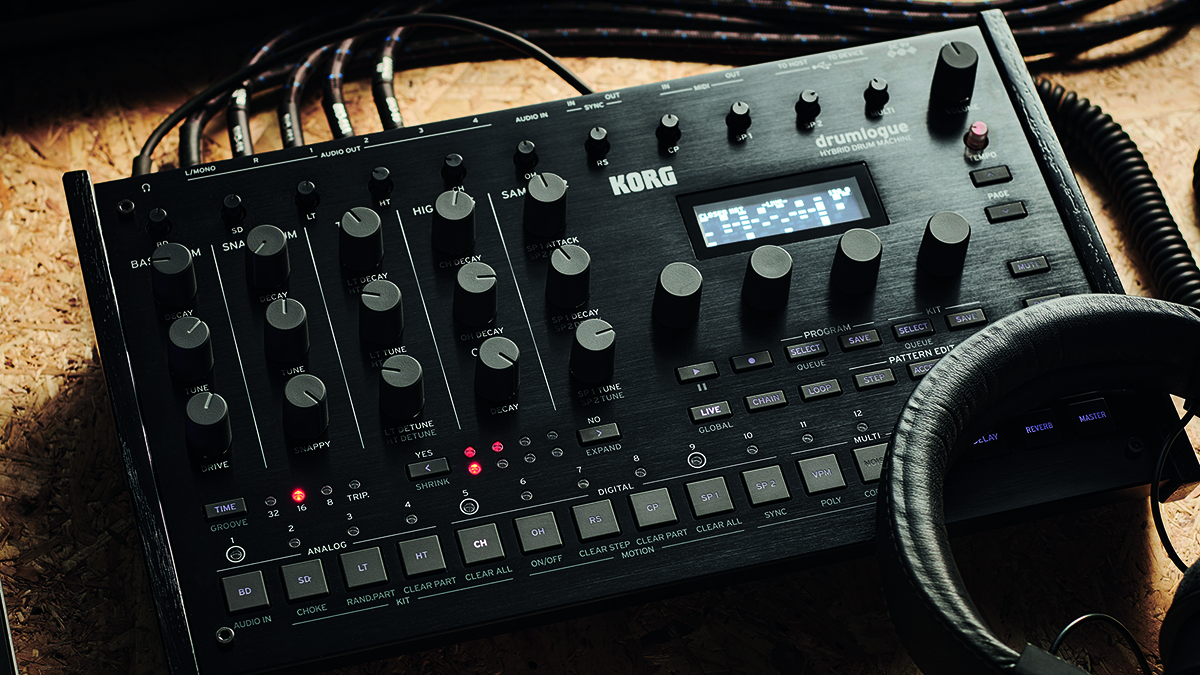
Later rhythm machines like the Volca Sample (and Sample2) and the Volca Drum each had their own unique features and ability to get people moving, but drum machine devotees still clamoured for more, and many thought Korg had something in the works to fit in the ‘logue lineup that already included such loved machines as the OG Minilogue, the Monologue, and the Prologue. Into that fray entered the Korg Drumlogue, first announced in January 2021 but not available publicly until the first quarter of 2023 for most.
So what makes it special? Well, to put it bluntly, Korg has had various drum machines over the years but none have the breadth and depth of the Drumlogue. Combining four analogue tracks (kick, snare, high and low tom), with six digital voices and a unique multi-voice that we’ll talk more about later, the Drumlogue combines a lot of features that are hard to get in a single machine.
Exploring Drumlogue's jam-packed feature set
So, let’s dive in. First, the hardware itself feels fairly fully featured, despite the somewhat diminutive size of the Drumlogue (for better or worse, depending on how much you travel!) There are 15 sound-shaping knobs on the top panel, which is tilted towards the user at a pleasing angle. Along the top of the machine are 11 small volume knobs inherited from the Volca range, each controlling one part (or “voice”).
There’s a sturdy master volume knob at the top right of the machine and a familiar row of 16 step buttons towards the bottom. These are of the clicky variety and have no velocity sensitivity built in, though there are ways to get around this, as we will see later.
The rear of the unit is also fairly featured for a machine at this price, meaning that you’ll be able to use the Drumlogue in a variety of situations, both in the studio and on stage. There are main stereo outputs along with an additional four outputs that are assignable via a shallow pool of menu diving (more on this later as well).
There’s also a headphone output for those luxurious couch sessions, full size MIDI in and out ports, sync in and out ports for the Volca family (amongst others), an audio input, an 1/8th inch jack, and then most interestingly, both a USB A and B port, labeled “To Host” and “To Device” on the front panel (see the Going Deeper section to read more about what this means).
Want all the hottest music and gear news, reviews, deals, features and more, direct to your inbox? Sign up here.
The Drumlogue also features a small but usable display that serves mostly to show your sequence in visual form using small rectangles to indicate steps on your grid. It harkens back to Roland’s TR-707 drum machine and is a welcome addition, especially for drum machine novices who aren’t experienced with the X0X workflow. This screen also scrolls along with your pattern so you’ll always know where you are.
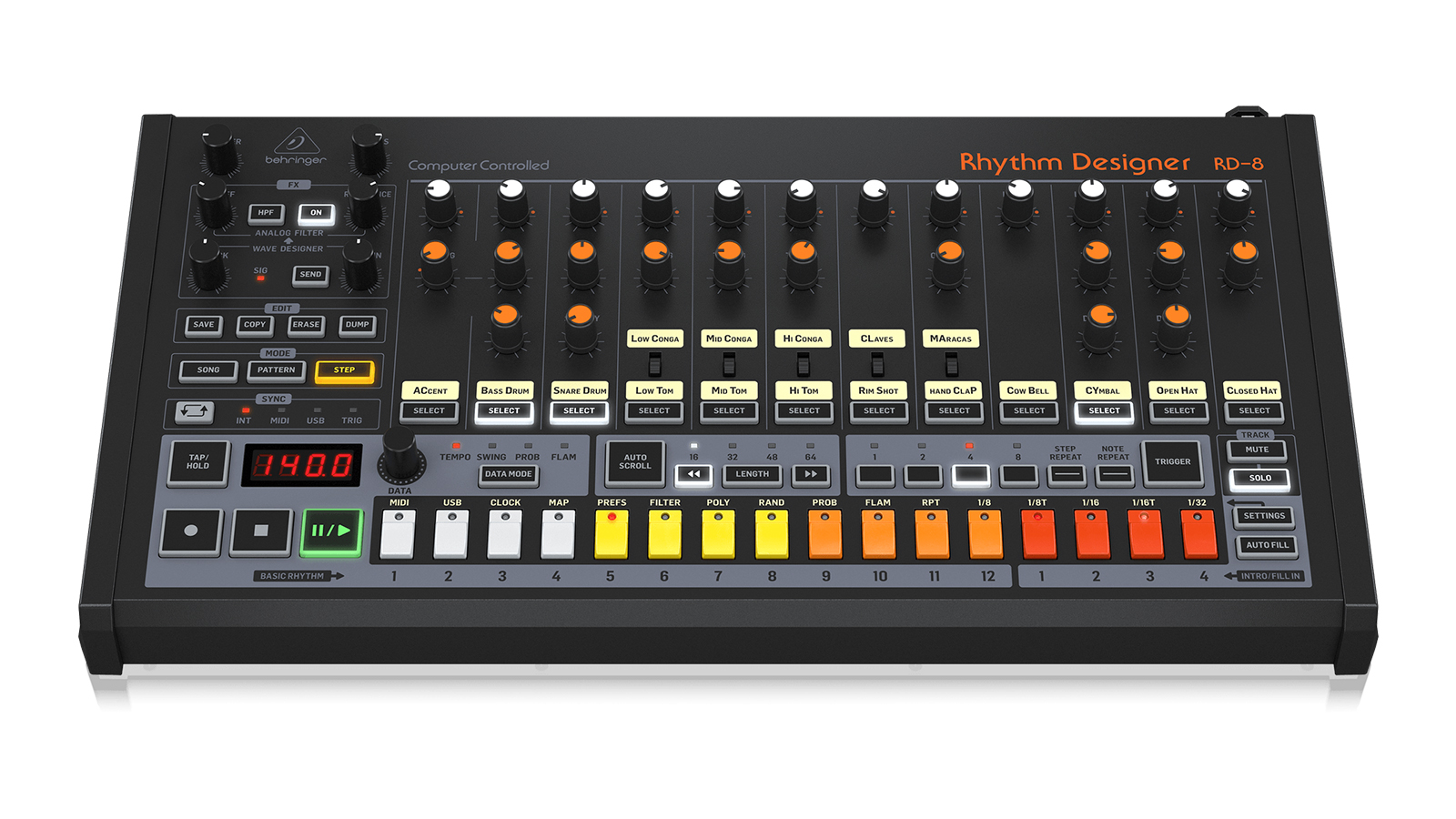
Best drum machines 2023: for every application and budget
The sequencer can be up to 64 steps long and features all of the modern niceties that you’d expect in a fully spec’ed machine: probability per step, the ability to nudge steps off the grid (which in Korg terms is labeled offset, positive/negative values are possible), and the ability to choose if a step plays every time the pattern cycles through or only some fraction of the time (ie the first of every three cycles). Coupled with the fact that each part can be set to its own step length, things get very interesting very quickly.
The Drumlogue also features four master effects (Boost, Compressor, EQ, and a Filter with Low Pass, Band Pass and High Pass options). It can store eight banks of 16 patterns, which in Korg speak are called Programs, as they contain both the sequence and Kit information. Kits can be saved with each Program but also can be saved independently and reused amongst several patterns, a feature lacking in other machines with higher price tags. Having the ability to save a kit also means that you can recall those settings instantly – a very handy feature in live performance.
Customise your Drumlogue with samples
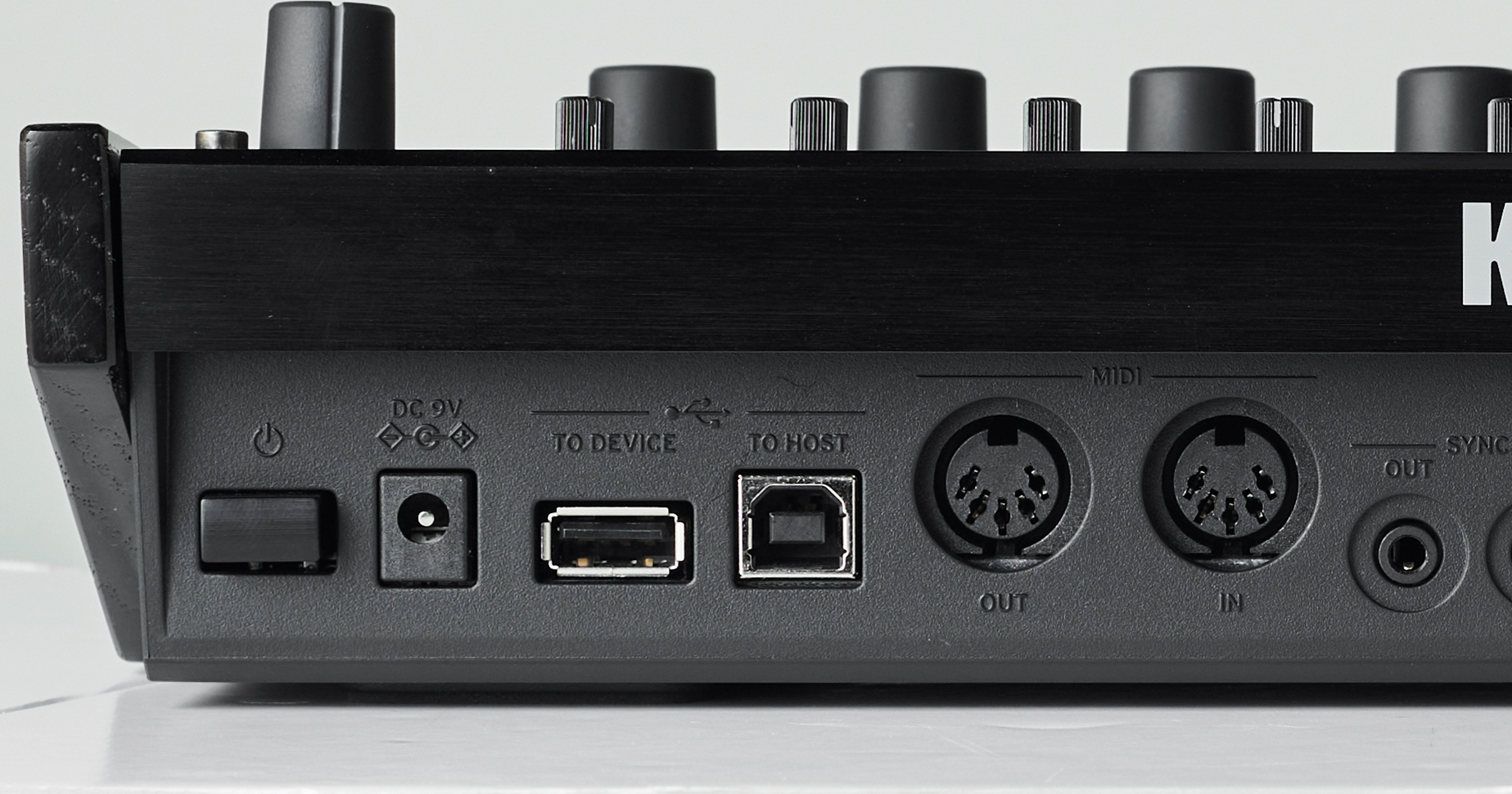
The Drumlogue’s ability to load samples, albeit with a meager 32MB of storage space available, greatly expands what’s possible sonically. In order to load your own samples, you’ll need to enter Storage mode. Power off the Drumlogue, connect a USB cable to your computer, and then reboot holding down the Record button.
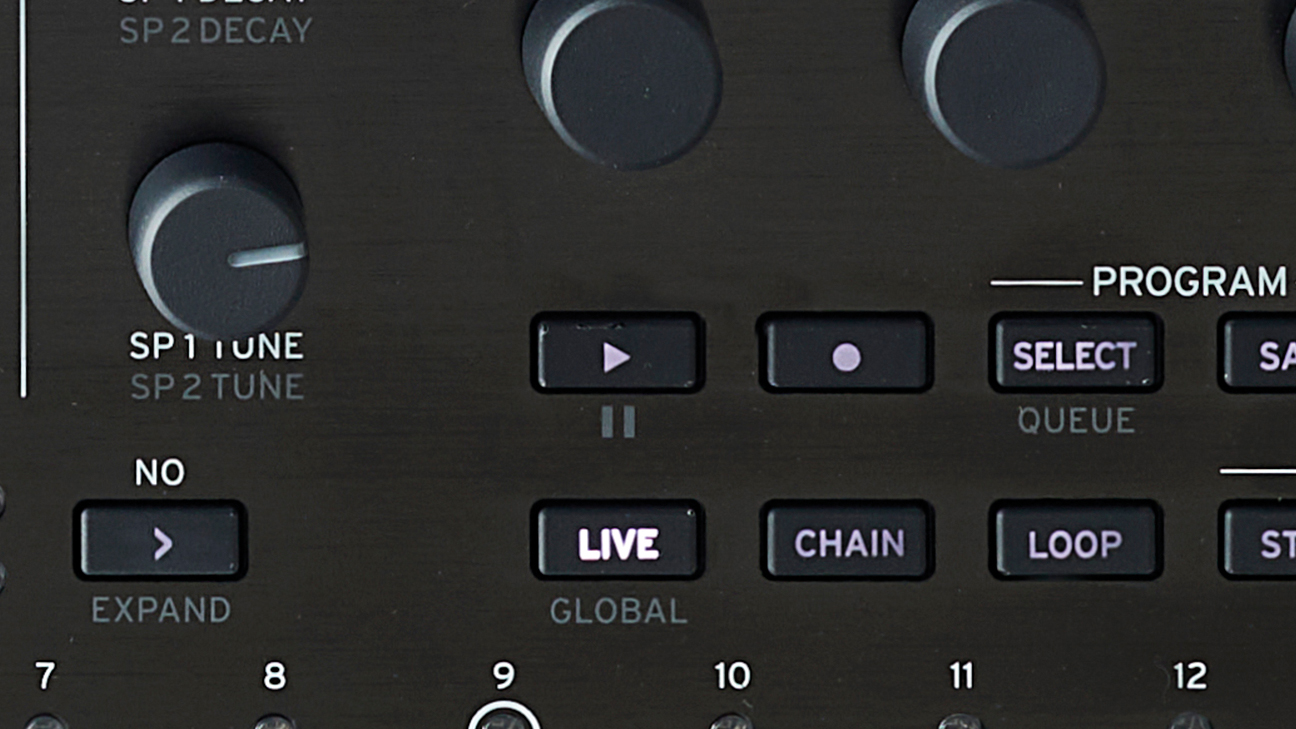
You should then see the Drumlogue as a drive on your device. Samples can be dropped into the Sample folder. It’s also possible to copy Programs and Kits for backup purposes. Eject the Drumlogue drive and then press Play to reboot.
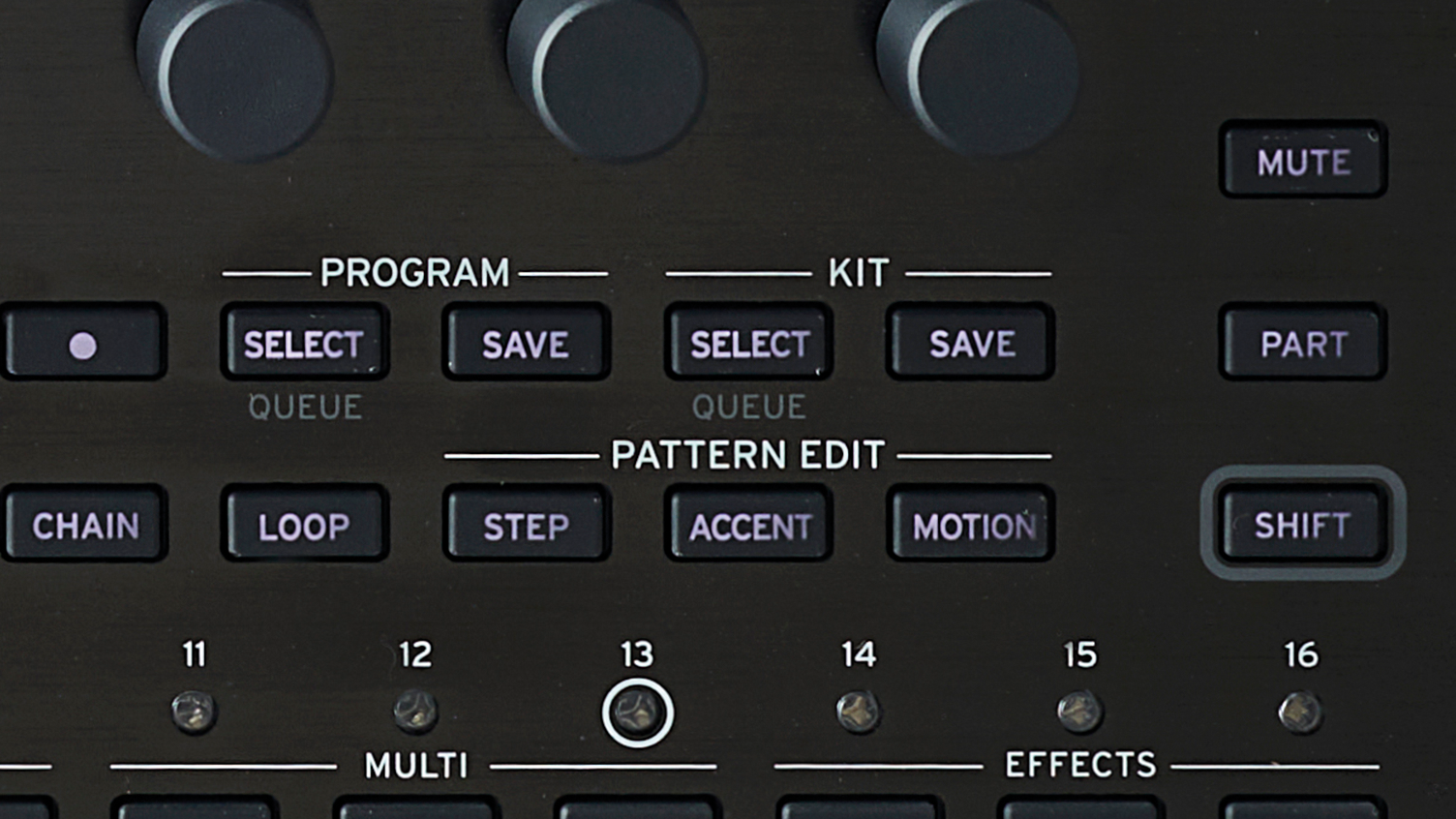
To add one of your custom samples to one of the six digital tracks, select a track and then simply press the Accent button. This will bring up the first “page” of editable parameters for each voice, which can also be accessed by pressing the Page Up button. Here you can scroll through seven banks of sample options; the User bank can hold 128 files.
Programming a polymetric rhythm
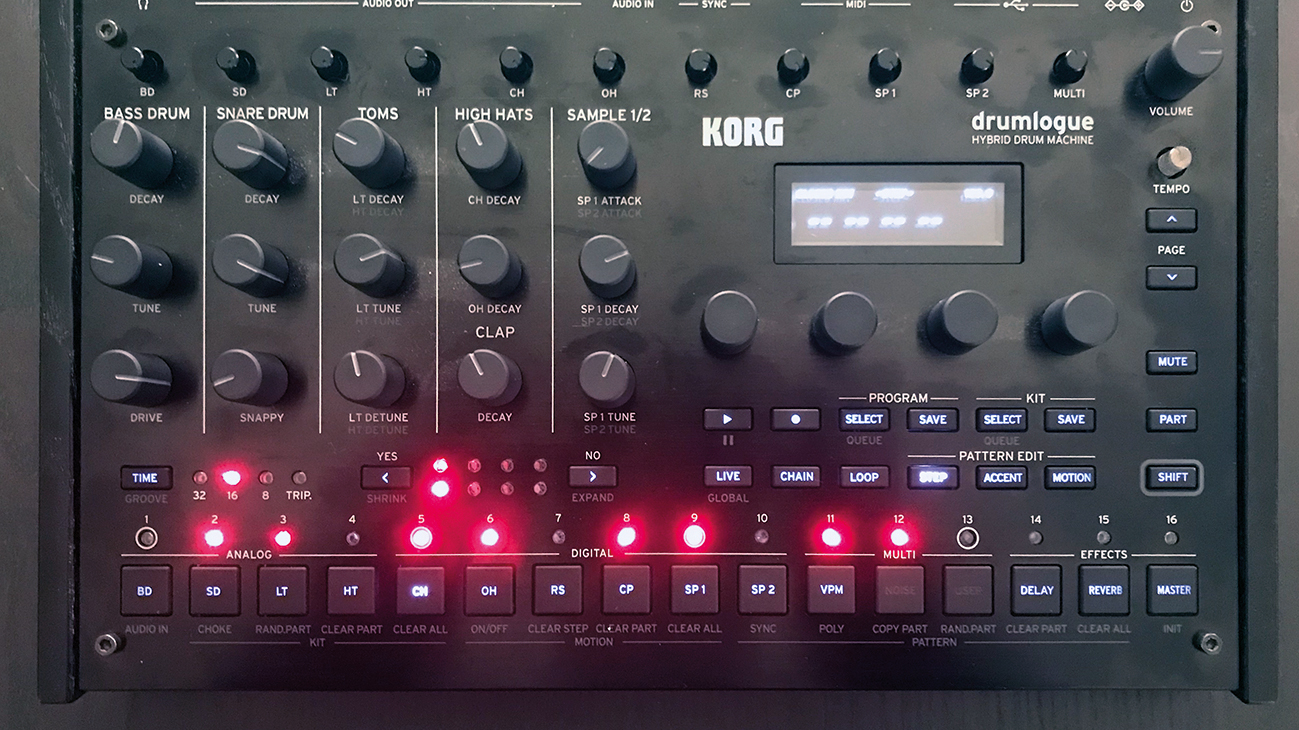
Select an unused pattern and choose a kit. We’ll use a pattern that’s 16 steps long, though longer pattern lengths yield even more interesting results. Start by programming Closed High Hat steps on 2, 3, 5, 6, 8, 9, 11, and 12. Hold down the Part button and select CH, then press the Step button and enter the steps on the 16 steps below.
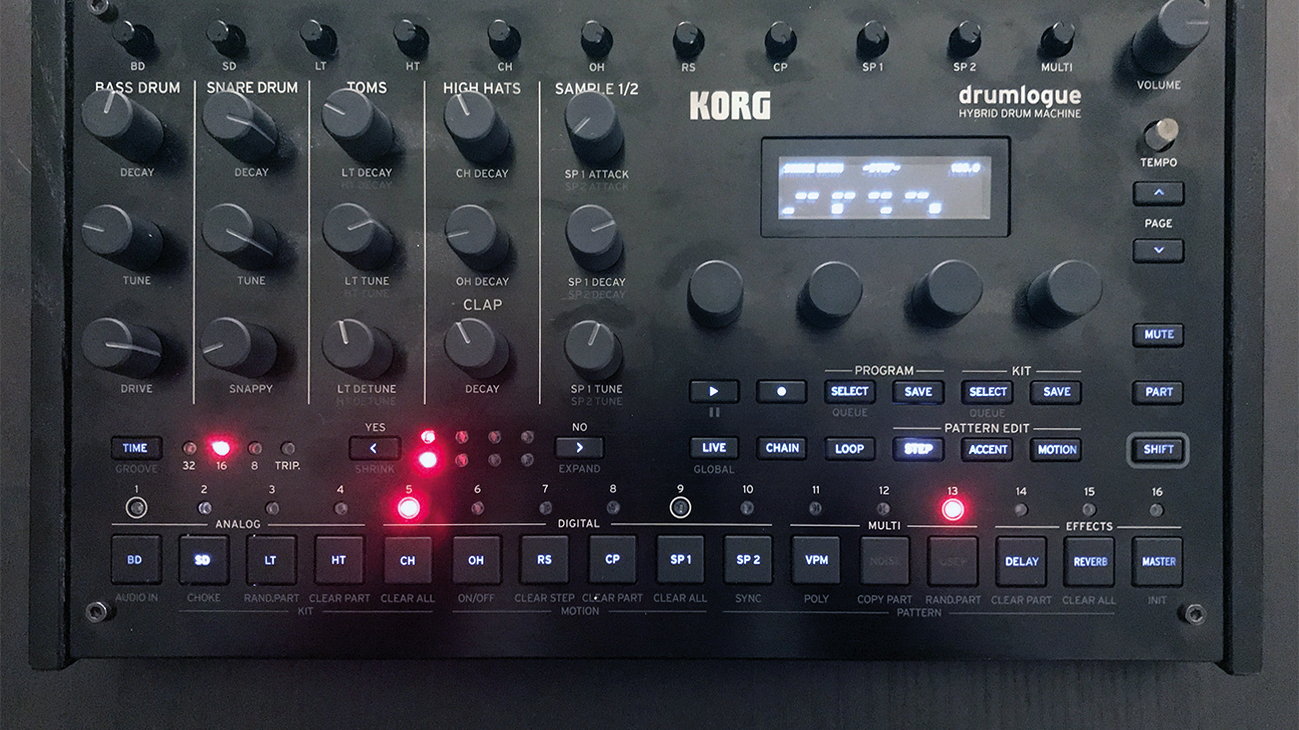
Now, let’s add a simple four-on-the-floor kick drum with steps on the usual downbeats, followed by snare hits on 5 and 12. Right now our pattern sounds pretty regular, as each track’s pattern length is the normal 16 steps, but that will change once we start adjusting individual track lengths.
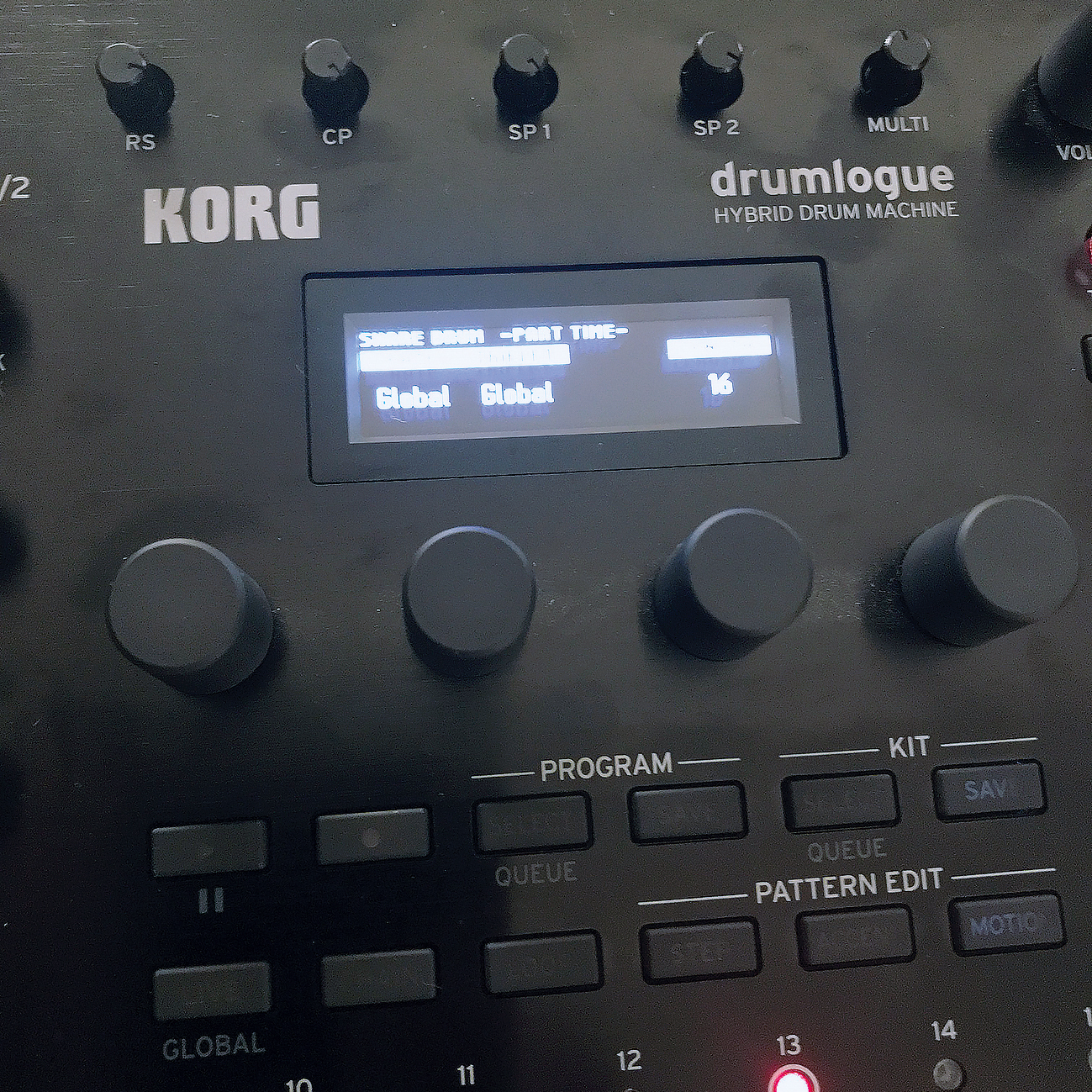
To adjust step length per track, choose a Voice (press Part) and an instrument, then press Part and Time. Hold the Time button and adjust the steps in its pattern. Giving auxiliary instruments like the Rimshot unique pattern lengths, while keeping the Kick/Snare steady, anchors a polymetric rhythm against something more recognisable to the listener.
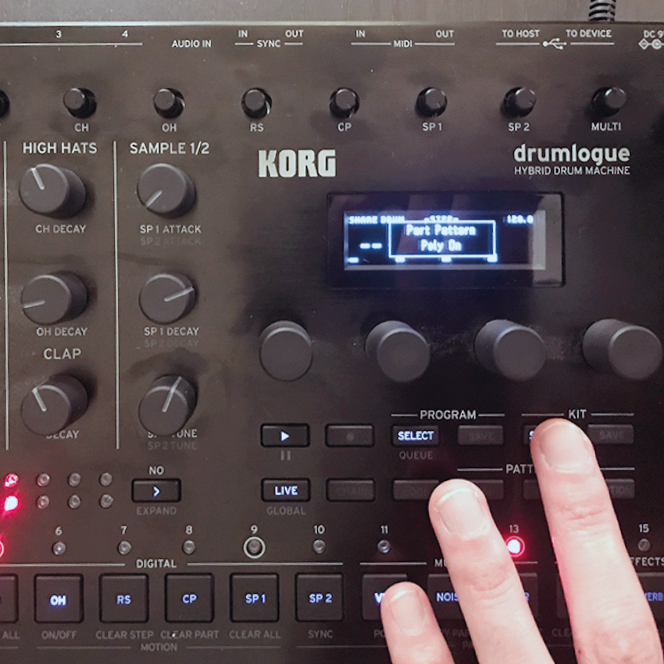
By default the tracks all reset to the downbeat of the Pattern, but you can also have the tracks freely cycle on their own. To turn on this setting, press Shift and the Step 11 Button. You’ll see a screen notifying you that Poly is turned on or off. This creates even more rhythmic interplay between your patterns, which you may or may not like. Play with both modes and see what works for you.
Step probability
Just like machines by Elektron and Polyend, the Drumlogue has the ability to apply probability per step, which makes even a simple, repetitive groove seem much more complex.
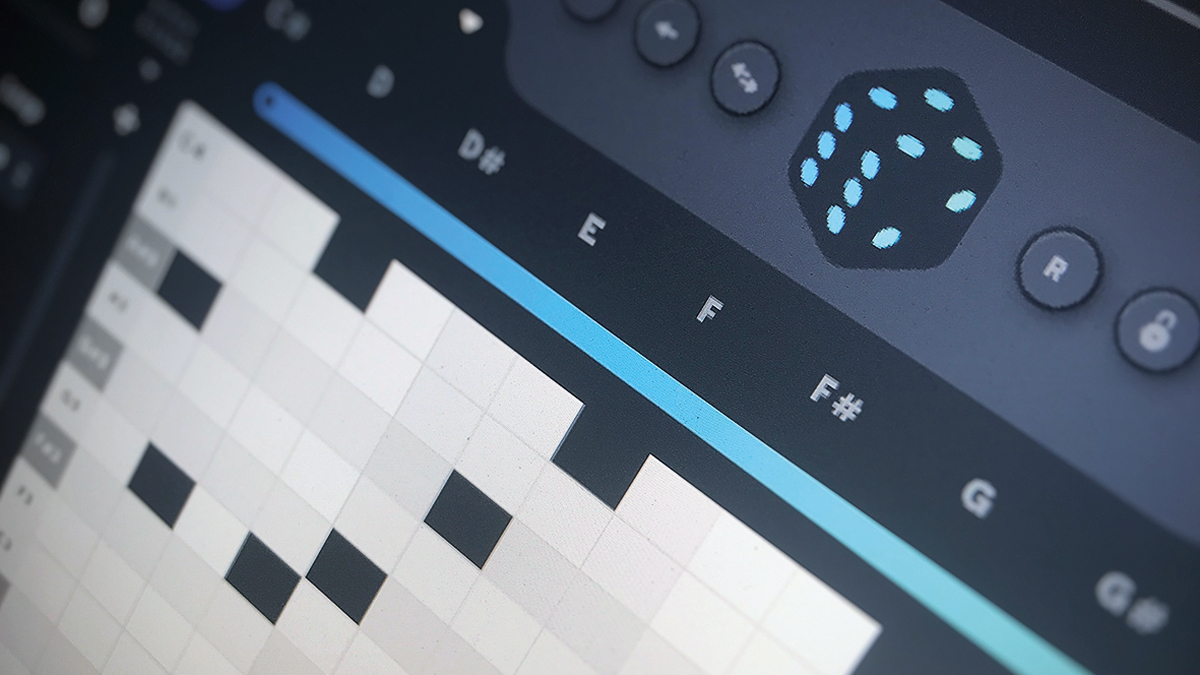
Ordered chaos: a guide to randomisation, probability and generative music
Probability can be applied on a per step basis and thankfully, Korg have made adjusting this easy. Make sure you’re in Step Mode, and then simply hold down a step to see that step’s ‘trigger’ values. You can also adjust whether that step is triggered every cycle or some fraction of the whole, which can add further complexity to your probability-infused grooves.
It’s also possible to nudge or offset your steps in this screen; negative values move your notes earlier in the grid and positive values later. You can even hold multiple steps at a time and adjust their values concurrently, which greatly speeds up workflow.
These sequencer tricks, if you will, combined with the analogue voices that the Drumlogue has to offer really add up to a unique groovebox once you start exploring its potential a bit more.
Going further with motion sequencing to program a bassline

Let’s continue with the polymetric groove that we’ve created earlier. So far, we’ve created an evolving rhythm that keeps the listeners’ attention far longer than a regularly repeating pattern would. But now we want to add a bassline that takes this drumbeat closer into a loop that can be turned into a full track.
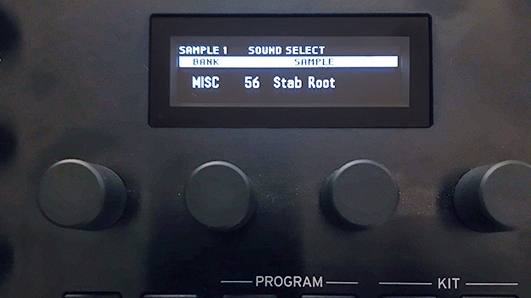
Select one of the Digital Sample tracks by pressing Part and any Step between 5 and 10. Each track is identical, so let’s use Track 9, labeled SP 1. Press Page Up to reveal the track’s selected Sample.
These are arranged in banks, and since we’re going to program a melodic line, scroll to the Misc bank and choose 56 Stab Root. This is a single, low note that we can form into a bass.
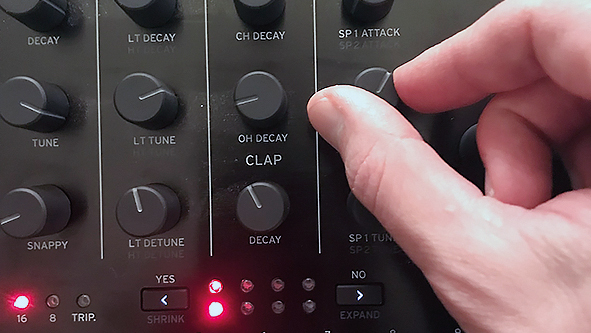
Press the Live button so that you can easily trigger the sound as you shape it to your liking. We want to make the sound punchier and shorter, so use the SP 1 Decay knob to shorten the Sample’s decay time. Around noon gives you a short, staccato sound that should work for bass.
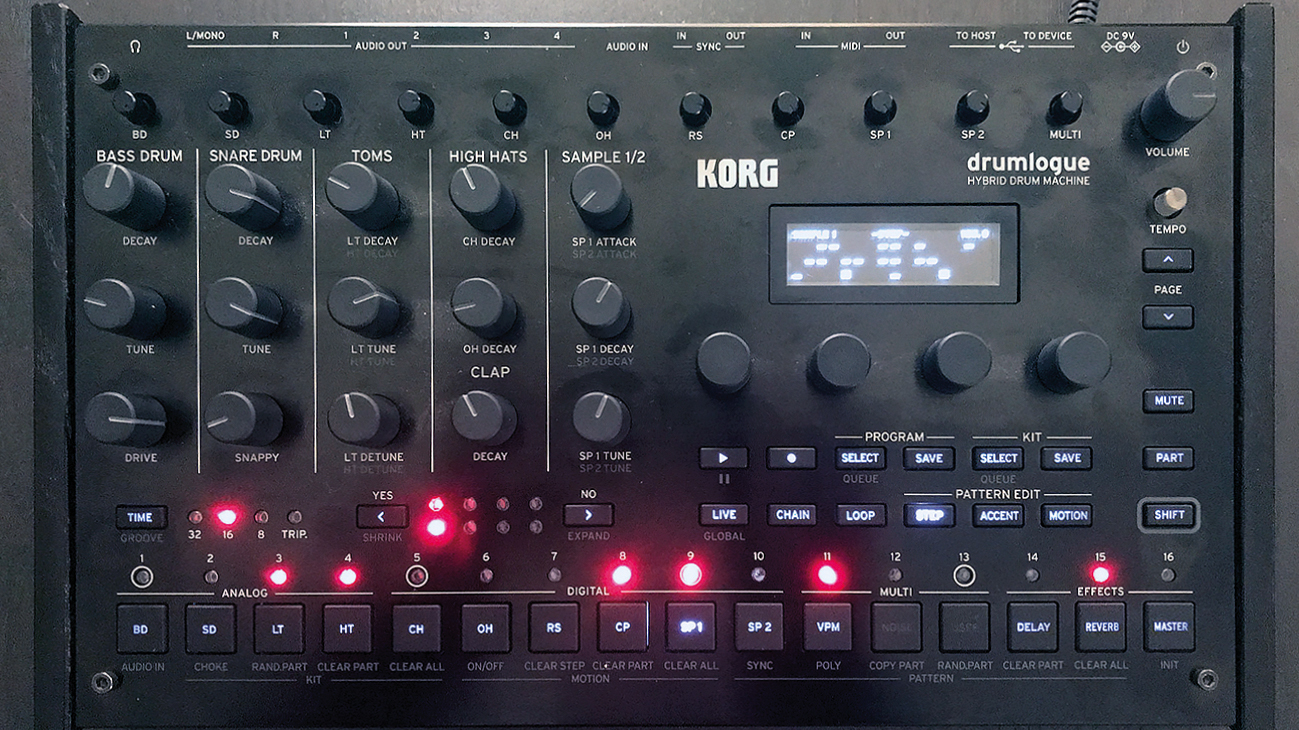
We can now punch in the rhythm of the bassline that we want (we’ll talk note values shortly!). Separating pitches from where steps are in the pattern is an interesting way to create ideas you may not have thought of, and comes from the days of using a TR-808 or TR-606 to trigger the sequencer of an SH-101.
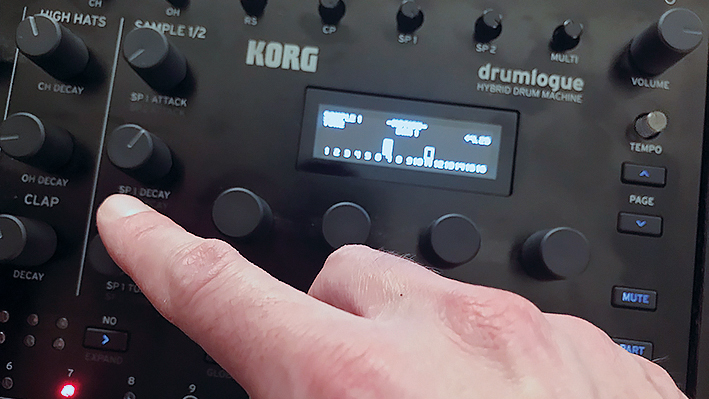
Now, to change the note values per step, navigate to Step view and note where you have steps placed. Switch to Motion edit mode by pressing the Motion button, and press a step with a note on it. Turn the SP 1 Tune knob to a note value of your liking while holding the step. This assigns that value to the step, much like parameter locking on other machines you may have used.
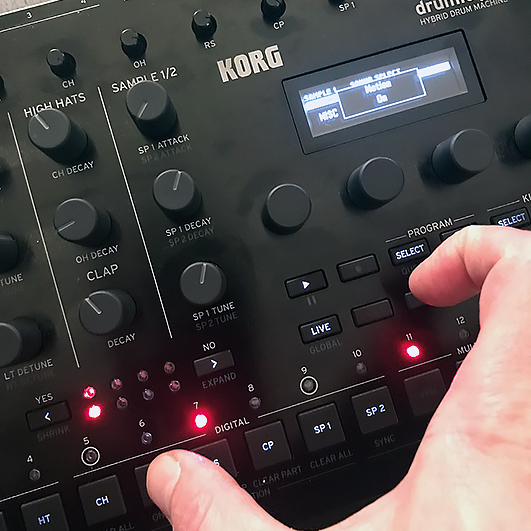
Note values can be changed in ¼ note increments, so it’s possible to create some microtonal melodies using this method as well. To stay within the 12 note scale, ensure to stick to whole note values.
Lastly, make sure Motion is turned on by pressing Shift and Step 6. Toggling Motion on and off can be another way to add variation to your pattern, so use it as a creative tool!
Going deeper with the Drumlogue...
Groove
Groove settings are unique and can really transform your patterns. To adjust the Groove (and thus the swing) per part, press Part and Shift and then Time, and then hold Time down while you adjust the swing settings.
There are many rhythmic options to choose from here as opposed to just swing options with different note values, and you can also impart the groove templates onto your pattern’s velocity and not just the timing, making it possible to create interesting variations without shifting beats.
Bring your own
Each of the digital voices on the Drumlogue is identical despite being labeled with unique names. Having the ability to shape and include your own samples into the Drumlogue’s analogue foray is hugely empowering and also greatly increases the sonic palette that is possible.
Each part has separate tuning, attack, start and end values, along with a filter and two drive amounts. Redux is a bit-reduction effect whereas Drive is a more standard overdrive. Finally, each part can be routed to the built in reverb, delay, and where it sits in the stereo field. Korg has also added the ability to remove each part from the Master output.
MIDI control
The Drumlogue’s dual USB hosts are quite rare on something at this price point. The ‘To Host’ port works as you’d mostly expect, connecting the Drumlogue to your computer for firmware updates, sample transfer and other tasks. ‘To Device’, however, allows you to connect (and power) a MIDI controller of your choice; be it one with pads, faders, buttons, or all of the above.
Having the ability to connect your favourite pad controller quite easily more than makes up for the fact that the Drumlogue lacks velocity sensitive buttons and is just one example of how the Korg engineers have chosen to solve certain problems from their own unique viewpoint.
Sinevibes Nano
The Drumlogue features a digital multi-engine that is similar to that in the Prologue and Minilogue XD (though unfortunately not directly compatible). It currently ships with Sinevibes’ Nano, a new synthesiser plugin made by Sinevibes, which is fairly impressive spec-wise on its own.
As of right now, this is the only custom plugin that’s available for the Drumlogue, but given Korg’s history with the Prologue and Minilogue XD, there will undoubtedly be other offerings as people get their hands on these machines.

